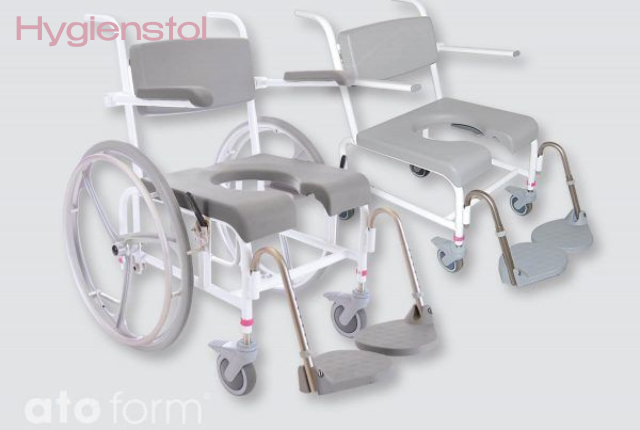Hygienstolar: Smart Seating for Hygiene and Comfort

In settings where infection control protocols are non-negotiable—clinics, hair and beauty studios, analytical laboratories, and residential eldercare—traditional seating options reveal inherent limitations. Hygienstolar, the dedicated class of chairs formulated for such environments, merges uncompromising cleanliness, exceptional durability, and user comfort. Whether the user is a clinician, a beauty therapist, or a care-home administrator, the strategic deployment of a well-designed hygienstol can markedly diminish cross-contamination vectors and simultaneously enhance the overall experience for staff and clients alike.
This document delineates the primary advantages of hygienstolar, enumerates the environments for which they are optimally suited, and outlines the criteria for selecting a chair that balances operational exigencies with ergonomic integrity. By the conclusion of the reading, the user will possess a consolidated set of knowledge enabling the judicious selection or strategic upgrade of hygienic seating systems.
Table of contents
What Is a Hygienstol?
A hygienstol (plural: hygienstolar) is a chair engineered for hygienic performance, typically fabricated from non-porous, readily disinfectable materials such as surgical-grade stainless steel, medical-grade vinyl, or antimicrobial polycarbonate. Each unit is rigorously calibrated for deployment in healthcare facilities, dental suites, analytical laboratories, beauty studios, and industrial cleanroom environments—settings in which maintaining definitional hygiene is both a regulatory imperative and a professional obligation.
Core Features of Hygienstolar
- Seamless construction that eliminates seams and crevices where biofilms could form.
- Antimicrobial upholstery that actively inhibits microbial growth on contact surfaces.
- Height and tilt adjustments that accommodate diverse user statures while maintaining neutral body posture.
- Resistance to damaging agents such as phenols, alcohols, and bleach-based disinfectants.
- Choice of lockable casters or fixed bases to ensure safe, stable positioning during procedures.
Why Hygienstolar Matter in Hygiene-Critical Spaces
Workspace configuration profoundly influences microbial risk. Conventional upholstered seating, with its absorbent fabrics and concealed cavities, traps moisture, dust, and pathogens. Hygienstolar addresses these vulnerabilities through an integrated, non-porous design that inhibits contamination from the outset.
Key Benefits:
Enhanced Infection Control
Non-porous, smooth surfaces entirely resist pathogen ingress, enabling rapid, complete disinfection after each use.
Ergonomic Support
Customisable lumbar, seat, and arm-rest supports decrease the risk of musculoskeletal disorder during lengthy procedures.
Durability
Materials engineered to resist abrasion, punctures, and chemical degradation ensure that seating remains functional and hygienic over years of heavy use.
Compliance-Friendly
Construction that satisfies ISO 14644 cleanroom classifications and OSHA ergonomic standards assists institutions in maintaining regulatory accreditation.
Types of Hygienstolar and Their Applications
Hygienstolar is available in fixed, height-adjustable, and mobile variants, each designed for distinct settings. Fixed models excel in stationary lab environments, height-adjustable versions suit multi-user clinics, while mobile designs enhance flexibility in surgical and dental theatres.
1. Medical Hygienist Stool
Ideal for: Primary care clinics, surgical units, dental practices
Attributes: Antimicrobial vinyl covering, smooth-gliding caster wheels, gas-lift height adjustment, reinforced lumbar backrest
Illustration: Stools routinely employed by oral surgeons and dental hygienists
2. Laboratory Seating Solutions
Ideal for: Research laboratories, pharmaceutical production lines, quality control stations
Attributes: Electrostatic discharge-safe polymers, surfaces resist organic solvents, ergonomic footring design
Illustration: Stools featuring welded stainless-steel bases and polyurethane-injected seats
3. Salon and Spa Hygienist Stool
Ideal for: Cosmetology stations, medical-aesthetic clinics, tattoo and piercing studios
Attributes: Space-efficient outline, removable and disinfectable upholstery, full 360-degree swivel
Illustration: Mobile stools with sculpted saddle seats for close facial and bodywork
4. Inclusive Seating for Seniors and Patients
Ideal for: Skilled-nursing facilities, therapeutic rehabilitation units, in-home care
Attributes: Height-adjustable arms, integrated lockable wheels, seamless, hygienic foam padding
Illustration: Antimicrobial shower commodes and toileting aid stools, molded in medical-grade polymer
Selecting the Most Suitable Hygienist Stool: Sequential Considerations
Step 1: Assess the Operational Setting
Will the stool face wet or sterile environments?
Must the design accommodate extended seating durations?
Step 2: Determine Materials and Construction
Opt for surfaces proven to resist bacteria or harsh chemicals
Select units with welded seams to eliminate crevices that harbor microbes
Step 3: Gauge Adjustability and Support
Confirm that the height range aligns with your primary workbench elevation
Seek lumbar contours and independent tilt controls for back health
Step 4: Verify Regulatory Endorsements
Check for CE marking, ANSI/BIFMA, or relevant medical-device certification
Review the product for compliance with local infection control standards
Verification: Confirm ISO certifications, CE markings, and, if appropriate, ADA compliance per jurisdiction and intended application.
Step 5: Evaluate Surface Cleanability
Seating surfaces must endure daily application of 70% alcohol or chlorine-based disinfectants without surface compromise.
Maintenance Recommendations for Long-Lasting Hygienstolar
Maintenance Tips for Long-Lasting Hygienstolar: A Detailed Guide
Regular upkeep of hygienstolar (hygienic chairs) is critical for their continued functionality and safety in settings where sterility is paramount—clinics, laboratories, professional beauty parlours, and long-term care facilities. Although these chairs are constructed for durability and hygiene, systematic maintenance is required to extend their operational life and preserve their performance criteria. The following narrative expands upon a four-level maintenance protocol: daily, weekly, monthly, and yearly attention.
Daily Maintenance: Disinfection Is Non-Negotiable
With each operating day, the hygienstol is subject to skin residuals, aerosolised and exogenous particles, bodily fluids, and, ironically, some cleaning agents. To avert bioburden accumulation, the entire chair must be treated with a validated disinfectant after service or after each individual use, dictated by the risk profile of the environment.
Validated disinfectants may include:
- Alcohol solutions containing 60 to 90% (v/v) ethanol or isopropanol
- Aqueous solutions of sodium hypochlorite, diluted according to surface compatibility
- Quaternary ammonium compounds, compatible with porous and non-porous finishes, as listed by the respective local infection control committee
Recommended practices for daily disinfection include:
- Employ a microfiber or soft cotton cloth to avert abrasion of upholstery and thermoplastic components.
- Refrain from mechanical abrasion, as aggressive pads can erode factory-applied, biostatic surface finishes.
- Attend to all geometries, including the periphery beneath the seat, activating all levers, the entire length of the armrests, and the internal race of the castors, where biofilms frequently colonise unnoticed.
- Let the chair air-dry fully, or use a clean microfiber cloth to remove residue, avoiding streaks and inhibiting moisture accumulation.
Employing this practice safeguards both the chair’s hygiene profile and the longevity of its surface finish and structural integrity.
Weekly Care: Assess for Deterioration and Defects
Daily cleaning safeguards microbial control; the weekly regimen pivots to comprehensive inspection. Even premium materials, given continual use, may reveal subtle deterioration.
Your weekly review should encompass the following:
- Scrutinize the upholstery for minuscule fissures, localized tears, or uniform loss of color; even microscopic breaches can serve as reservoirs for pathogens.
- Verify the integrity of seams, looking for obvious loosening or fraying at stitched junctions.
- Inspect wheels and casters for lodged particles, notable play, or asymmetric rolling behavior.
- Engage the gas-cylinder adjuster or levered controls, confirming fluid engagement throughout the full travel range.
- Correcting minor discrepancies at this juncture is prudent. A superficial upholstery fissure, if reinforced or sealed promptly, can be contained, thus forestalling the expense of full component replacement.
Monthly Maintenance: Mechanical and Functional Check-Up
Dedicate one occasion each month to step beyond routine cleaning and carry out a comprehensive mechanical examination of the hygienstol. Although the chair itself appears static, its articulated elements—swivels, casters, height-adjusting mechanisms, and movable armrests—experience cumulative mechanical loading with every patient transfer.
Proceed as follows:
- First, incrementally tighten all screws, bolts, and fasteners. Any looseness in these critical junctions can culminate in structural wobble or, in the worst case, unexpected collapse, both of which are untenable in a clinical environment.
- Next, apply a manufacturer-approved lubricant to movable joints, ensuring a glide that is both smooth and largely inaudible, which is conducive to patient relaxation.
- Examine each caster or wheel in turn, removing any hair, dust, or particulate that has coiled around the axle. Replace any wheel that is cracked or that has developed a perceptible wobble during rotation.
- Finally, actuate the chair’s tilt and swivel mechanisms, confirming that each motion is free of the stickiness or grating that may indicate underlying wear.
Execution of these monthly procedures forestalls the mechanical failures that might otherwise disrupt patient flow or introduce safety liabilities.
Annual Maintenance: Assess and Upgrade If Needed
Following twelve months of continuous operation, even the most rigorously engineered hygienstolar demand a systematic year-end review. This is the optimal juncture to evaluate the need for reupholstery, for the substitution of worn or compromised components, or for the acquisition of a wholly new chair.
Critical factors to assess include:
- Is the seat cushioning still adequately resistant to deformation under load?
- Has the upholstery lost its original velour feel or begun to exhibit strand separation?
- Are any structural components exhibiting pitting, oxidation, or fatigue beyond practical repair?
Should any of these criteria result in affirmative responses, reupholstery—or outright replacement—becomes the prudent course, particularly in regulated sectors such as healthcare, where the tolerable variance for cosmetic or structural imperfection is effectively zero.
Reputable manufacturers frequently provide refurbishment programs or catalogue replacement assemblies for armrests, bases, and cushioning layers. Utilizing these services can preserve the ergonomic integrity of the hygiene stool while remaining within compliance and economic thresholds.
Empirical Illustration: Hygienstolar in a Dental Practice, Stockholm
A Stockholm dental clinic lowered postoperative infection incidence by 35% following exchange of textile stools for ergonomic hygienstolar of PU-foam and stainless steel. Personnel reported enhanced biomechanical support and diminished fatigue. The investment amortized in 18 months through decreased absenteeism and increased appointment capacity.
Comparative Analysis: Conventional Stool versus Hygienstol
| Feature | Traditional Chair | Hygienstol |
| Material | Fabric/Foam | Vinyl/Stainless Steel |
| Cleanability | Low | High |
| Bacteria Resistance | Poor | Excellent |
| Ergonomics | Basic | Advanced |
| Regulatory Compliance | Often Non-Compliant | Generally Compliant |
Alt text for figure: Lateral comparison of a conventional clinic stool and a medical-grade hygienstol.
Vendors of Hygienstolar: Recommended Sources
- Arbejdstole.dk: Nordic distributor specializing in ergonomic chairs for medical and dental environments.
- Medshop.se – Supplies CE-marked hygienstolar designed specifically for healthcare practitioners.
- Global Industrial – Provides international shipping alongside bespoke configuration possibilities.
- Caveat: Validate all certification claims prior to acquisition in jurisdictions with regulatory oversight.
Conclusion
Hygienstolar transcend mere seating apparatus; they constitute strategic instruments in the triad of health, safety, and operational efficiency. By neutralising bioburden threats and enhancing user ergonomics, they augment the overall performance of any environment governed by hygiene imperatives. Whether administration of a high-volume dental facility, stewardship of an ultraclean laboratory, or proprietorship of a salon dedicated to personal care, the directed procurement of durable hygienstolar yields observable gains in sterility, regulatory adherence, and employee morale.
FAQS
1. What distinguishes a hygienstol from traditional seating in hygiene-sensitive environments?
A hygienstol is engineered specifically for environments that demand rigorous infection control. Unlike conventional fabric chairs, it features seamless construction, antimicrobial materials, and surfaces resistant to chemical disinfectants. This design minimizes contamination risk while supporting ergonomic health, making it indispensable in clinical, laboratory, beauty, and eldercare settings.
2. How do I choose the most appropriate hygienstol for my professional setting?
Selecting the right hygienstol involves assessing the operational environment, material compatibility, ergonomic features, and regulatory compliance. Look for models with non-porous surfaces, adjustable components, and certifications like ISO 14644 or CE marking to ensure both performance and adherence to sanitation standards.
3. What maintenance protocols ensure the longevity and hygiene integrity of hygienstolar?
To maintain optimal performance, implement a four-tiered maintenance regimen: disinfect daily with approved agents, inspect weekly for material degradation, conduct monthly mechanical check-ups, and perform an annual review for reupholstery or replacement. This structured approach preserves both hygiene compliance and product durability over time.





